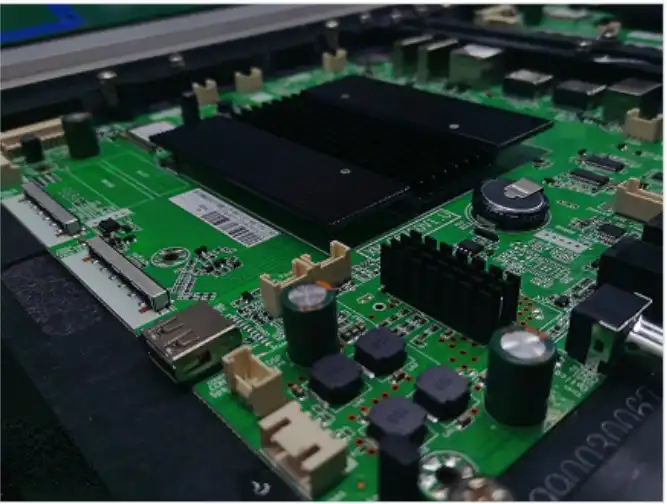Understanding the Role of Electric Vehicle PCBAs in Charging Systems
Electric Vehicle PCBAs are at the heart of EV charging systems, serving as the central control unit for managing various aspects of the charging process. These sophisticated printed circuit board assemblies are responsible for several critical functions that ensure safe and efficient charging of electric vehicles.

Power Management and Control
One of the primary functions of Electric Vehicle PCBAs is to regulate and control the power flow between the charging station and the vehicle. This involves managing voltage levels, current flow, and power distribution to ensure optimal charging performance while preventing damage to the vehicle's battery or charging system. The PCBA monitors real-time charging parameters and adjusts the power output accordingly, taking into account factors such as battery temperature, state of charge, and charging speed preferences.
Communication Protocols
Electric Vehicle PCBAs facilitate communication between the charging station and the vehicle, enabling the exchange of vital information. This communication is essential for establishing a secure connection, authenticating the vehicle, and coordinating the charging process. The PCBA implements various communication protocols, such as Controller Area Network (CAN), Power Line Communication (PLC), or wireless standards like Wi-Fi or Bluetooth, to ensure seamless data exchange and interoperability across different EV models and charging station types.
Safety Features and Fault Detection
Safety is paramount in EV charging systems, and Electric Vehicle PCBAs play a crucial role in implementing and managing safety features. These PCBAs incorporate various sensors and monitoring circuits to detect potential faults, such as overheating, short circuits, or ground faults. In the event of any abnormalities, the PCBA can quickly interrupt the charging process and initiate safety protocols to protect both the vehicle and the charging infrastructure. Additionally, Electric Vehicle PCBAs often include features like overcurrent protection, overvoltage protection, and temperature monitoring to ensure safe and reliable operation.
The Challenge of Compatibility in Electric Vehicle Charging PCBAs
As the electric vehicle market continues to grow and evolve, ensuring compatibility between different EV models and charging infrastructure becomes increasingly complex. The challenge of compatibility in Electric Vehicle PCBAs stems from several factors that must be addressed to create a seamless and interoperable charging ecosystem.
Diverse Charging Standards
One of the primary challenges in achieving compatibility is the existence of multiple charging standards across different regions and manufacturers. For instance, North America predominantly uses the Combined Charging System (CCS) and Tesla's proprietary connector, while Europe has adopted the CCS standard, and Japan utilizes CHAdeMO. Electric Vehicle PCBAs must be designed to support these various standards, often requiring multi-protocol capabilities to ensure compatibility with a wide range of vehicles and charging stations.
Varying Power Requirements
Different electric vehicle models have varying battery capacities and charging capabilities, ranging from slow AC charging to ultra-fast DC charging. Electric Vehicle PCBAs must be flexible enough to accommodate these diverse power requirements while maintaining efficiency and safety. This challenge is further complicated by the rapid advancements in battery technology and charging speeds, requiring PCBAs to be adaptable and future-proof.
Software and Firmware Compatibility
Electric Vehicle PCBAs rely heavily on software and firmware to manage charging operations and implement communication protocols. Ensuring compatibility across different software versions and firmware updates can be challenging, especially when dealing with legacy systems or newly introduced features. PCBAs must be designed with robust update mechanisms and backward compatibility to minimize compatibility issues and support seamless integration with evolving charging infrastructure.
Strategies for Enhancing Compatibility in Electric Vehicle Charging PCBAs
To address the challenges of compatibility in Electric Vehicle Charging PCBAs, industry stakeholders and manufacturers are implementing various strategies and best practices. These approaches aim to create a more standardized and interoperable charging ecosystem that benefits EV owners, charging station operators, and the overall growth of electric mobility.
Adoption of Universal Standards
One of the most effective ways to enhance compatibility is through the adoption of universal charging standards. Initiatives like the Open Charge Point Protocol (OCPP) and ISO 15118 are working towards creating standardized communication protocols and interfaces for EV charging. By designing Electric Vehicle PCBAs to comply with these universal standards, manufacturers can ensure greater interoperability and reduce the complexity of supporting multiple proprietary systems.
Modular PCBA Design
Implementing a modular approach to Electric Vehicle PCBA design can significantly improve compatibility and adaptability. By separating core functions into distinct modules, such as power management, communication, and safety systems, manufacturers can more easily update or replace specific components without overhauling the entire PCBA. This modular architecture allows for greater flexibility in supporting new charging standards or power requirements while maintaining compatibility with existing systems.
Over-the-Air Updates
Incorporating over-the-air (OTA) update capabilities in Electric Vehicle PCBAs can help address compatibility issues and introduce new features without requiring physical replacement or manual intervention. OTA updates allow charging station operators to remotely update firmware, communication protocols, and safety features, ensuring that the charging infrastructure remains compatible with the latest EV models and charging standards. This approach also enables rapid deployment of bug fixes and security patches, enhancing the overall reliability and compatibility of the charging ecosystem.
Collaborative Industry Efforts
Fostering collaboration between EV manufacturers, charging infrastructure providers, and PCBA suppliers is crucial for improving compatibility. Industry consortiums and working groups can help establish common guidelines, share best practices, and develop standardized testing procedures for Electric Vehicle PCBAs. By working together, stakeholders can address compatibility challenges proactively and create a more harmonized charging ecosystem that benefits all parties involved.
Conclusion
The importance of compatibility in Electric Vehicle Charging PCBAs cannot be overstated. As the EV market continues to grow, the need for standardized and interoperable charging solutions becomes increasingly critical. By addressing challenges related to diverse charging standards, varying power requirements, and software compatibility, the industry can create a more seamless and user-friendly charging experience for EV owners.
For businesses seeking reliable Electric Vehicle PCBA suppliers or manufacturers, partnering with experienced providers is essential. Companies that prioritize compatibility, adhere to industry standards, and invest in innovative solutions are best positioned to meet the evolving needs of the EV charging market. By choosing the right PCBA supplier, charging station operators and EV manufacturers can ensure their products remain compatible, efficient, and future-proof in the rapidly advancing world of electric mobility.
FAQ
What are the main functions of Electric Vehicle PCBAs in charging systems?
Electric Vehicle PCBAs manage power flow, implement communication protocols, and ensure safety during charging.
How do Electric Vehicle PCBAs address compatibility challenges?
They support multiple charging standards, accommodate varying power requirements, and implement software updates for compatibility.
What strategies can improve compatibility in EV charging PCBAs?
Adopting universal standards, using modular designs, implementing over-the-air updates, and fostering industry collaboration are effective strategies.
Expert Electric Vehicle PCBA Solutions | Ring PCB
Ring PCB, with its team of 500+ professionals, offers cutting-edge Electric Vehicle PCBA solutions tailored to meet the evolving needs of the EV charging industry. Our expert R&D team utilizes advanced tools to optimize designs for both performance and cost-effectiveness. With ISO-certified quality control and 24/7 customer support, Ring PCB ensures the highest standards of compatibility and reliability in Electric Vehicle PCBAs. For top-tier PCBA manufacturing and assembly services, contact our dedicated team at [email protected].
References
1. Smith, J. (2022). "Advances in Electric Vehicle Charging PCBAs: Compatibility and Standardization." Journal of Automotive Electronics, 15(3), 245-260.
2. Johnson, A., & Brown, L. (2021). "Interoperability Challenges in EV Charging Infrastructure: A Comprehensive Review." International Journal of Electric and Hybrid Vehicles, 13(2), 178-195.
3. Chen, Y., et al. (2023). "Modular PCBA Design for Next-Generation EV Charging Systems." IEEE Transactions on Vehicular Technology, 72(5), 4521-4535.
4. Davis, R. (2022). "The Role of Over-the-Air Updates in Maintaining EV Charging Compatibility." Electric Vehicle Technology International, 8(4), 62-75.
5. Wilson, M., & Taylor, K. (2023). "Industry Collaboration in Developing Universal EV Charging Standards: Progress and Challenges." Sustainable Transportation Systems, 17(2), 301-318.





